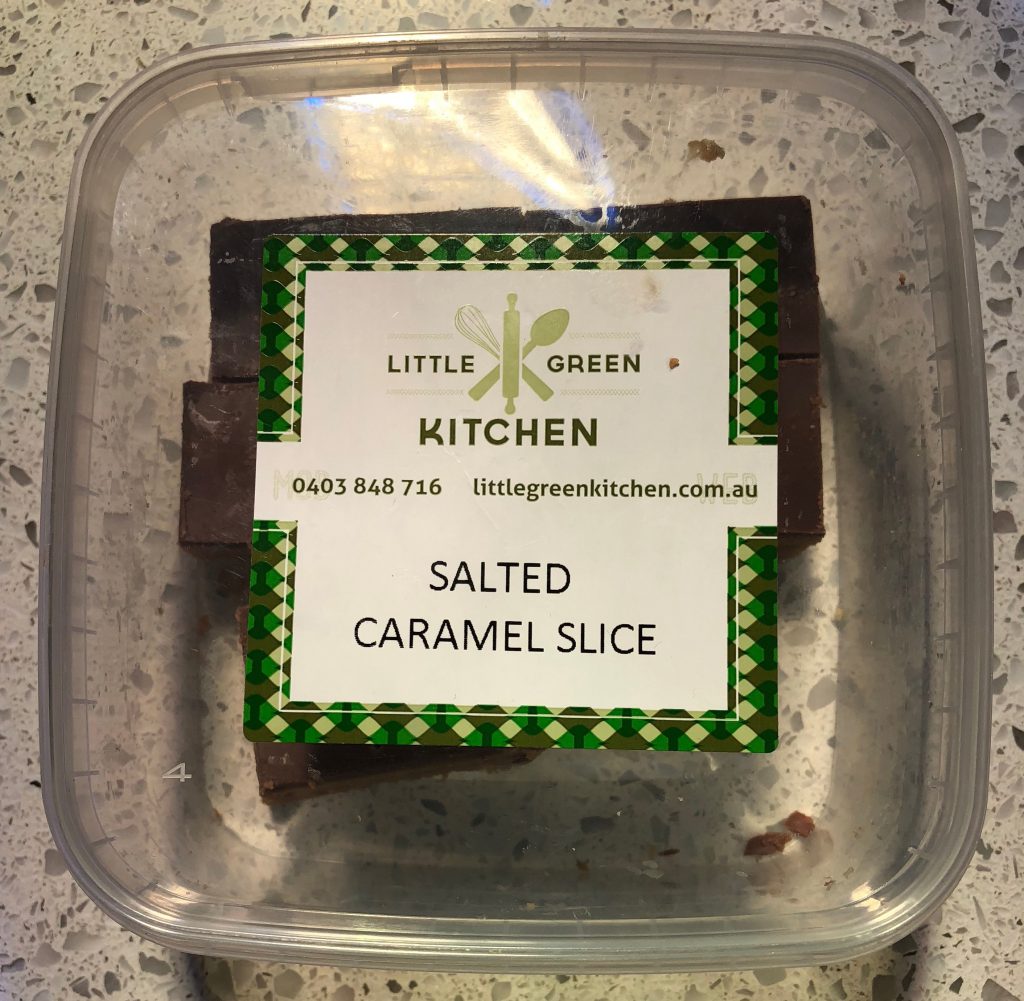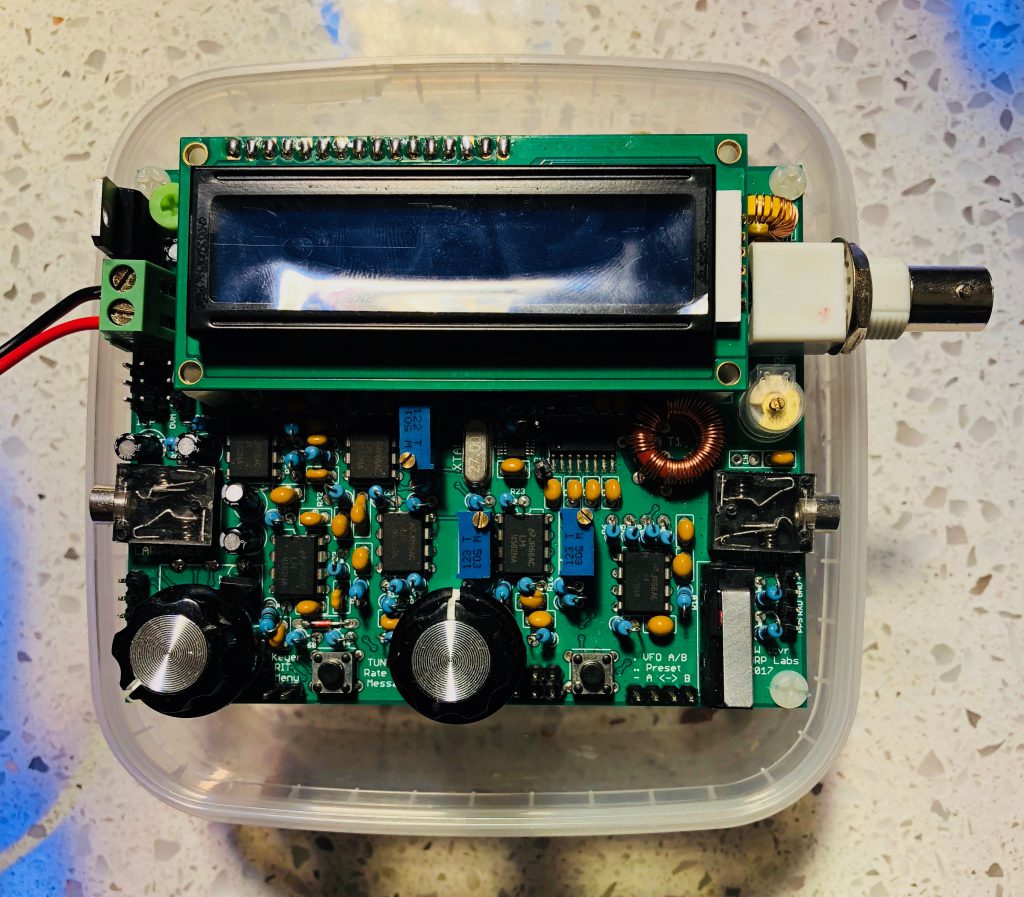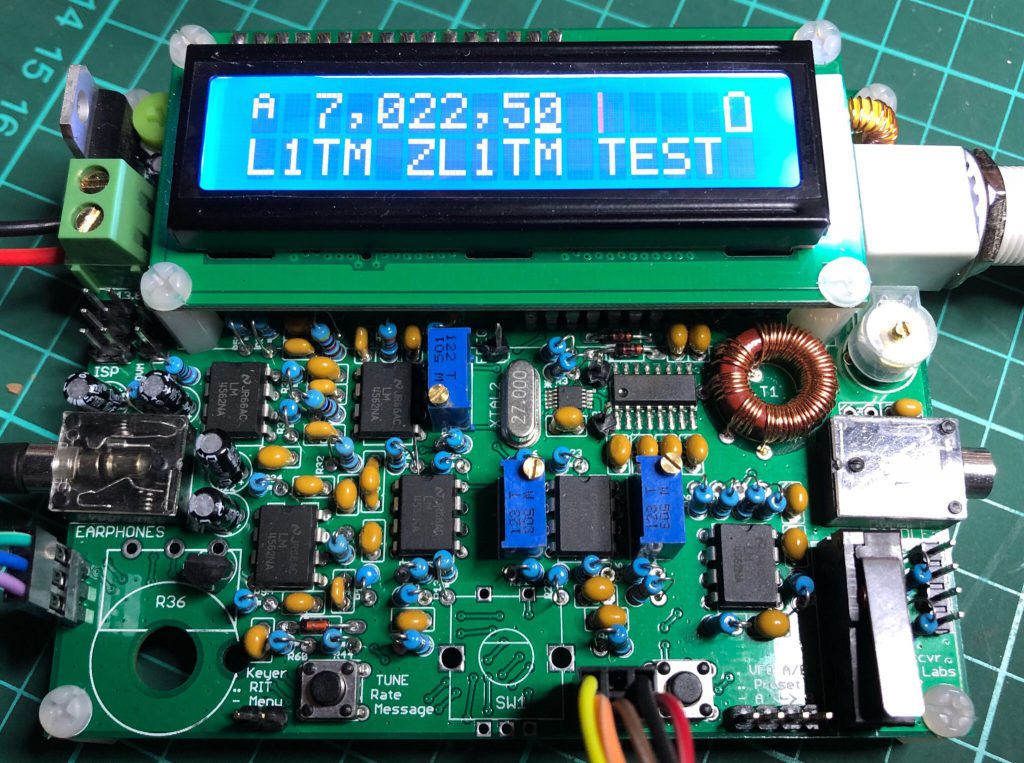I finally found some quality time to spend on the QCX to work out why I wasn’t getting any RF output. In my efforts, I committed one of those predictable errors and very unscientifically changed one more factor than I should have. This resulted in a detour that made the search longer, but it did reveal something interesting about the radio.
I had decided I needed to thoroughly check out all the connections in the bandpass filter and the RF amplifier section, even though I had been very careful visually checking and testing continuity at each step of the build. But the fact of the matter was there was no power at the output. At key down, I was getting 0.01 volts. I re-flowed a number of joints on the printed circuit board. Under magnification at some angles, even the neatest solder joint can look like a cold joint.
I also suspected that some of my earlier ham-fisted testing of the radio may have created its own casualties. I was so keen to try out the built-in test equipment, I connected up my probe incorrectly. I was probably tired. I was definitely woken up by the little spark, then the fact that the wire I was holding suddenly went limp and then a puff of magic smoke emerged from behind the LCD panel! I had connected the SCK pin on the programming header instead of the RF pin nearby to the RF output!
From all the discussion on the QRPLabs email group, I guessed that Q6, the MPS2307A had probably been the source of the smoke. The consensus seems to be that they may be underrated. Hans is now shipping a more resilient transistor the MPS751 in its place. I couldn’t source any of these quickly and locally so opted to replace the original with another MPS2307A. After I had removed the transistor I tested it on a nifty component tester which concluded that rather it was actually a pair of resistors rather than a transistor. This seemed to confirm I must be on the right track.
My next mistake was to decide to test the radio using a different voltage to earlier testing. I had read that the recommended range of voltage extends from 7 volts up to 16 (see page 5 of the manual), so I thought I’d use 9 volts. I think, also that the only way to reduce output power is by reducing the voltage. In any case, after I re-connected the radio, I noticed first of all that the sidetone was somehow delayed. If you sent a series of dits at say 15 wpm, you wouldn’t hear anything. And you had to hold the dash to hear it eventually.
I had the dummy load connected to the antenna and tuned a local receiver with no antenna connected to the same frequency and noticed that actual signal was not delayed. That’s interesting! Is there component where the sidetone is generated introducing the delay? I also realised that I was actually getting some RF output which I measured at about 1.3 watts. The voltage was just over 9 volts and the RF voltage across the 50Ω dummy load was about 11 volts. The RF output was good but the delayed sidetone was a bit like talking with a delayed echo in your ears. Between this paragraph and the next, there was a fair amount of head-scratching and further checking.
Then I decided I should see what the RF output is with a more regular voltage like 13.1 volts. I was delighted to see the voltage across the dummy load at 20 volts which neatly converts to 4 watts. And I was even more delighted to hear that the sidetone was back in sync with the key! So the lag appears to have been a result of the lower voltage. I’m not sure what the implications are of this if you want to wind back the wick and transmit at a lower output level. The signal sounded clean – it was just the sidetone that was laggy.
Another thing I learnt during this phase of the troubleshooting was that a good way to remove the remnants of a component like a transistor is to melt some fresh solder on the joint to get the heat to flow more readily to loosen things up. I think I became better at using solder wick as well, with a dab of the flux pen. The printed circuit board stood up to my efforts replacing the transistor and other components like one of the toroid coils when checking the leads. I used a fine pointed iron tip at 370° C.
Everyone says that the overwhelming majority of faults with home constructed electronics kits – at least 90% – are to do with the soldering not being up to scratch. So I figure all the time spent checking solder joints during assembly and afterwards paid off. If you tell yourself how much time you’ll save later, it becomes a more enjoyable part of the whole assembly process.
I also finally managed to upgrade the firmware using the Arduino Uno and Avrdudess application. I had to force it but at long last, the application finally recognised the identity of the microcontroller in the radio. There must be a dodgy connection between the radio and the Arduino.
Now I’m confident it’s working as it should I should make some contacts and then work my way through the manual again to confirm all is as it should be. But I will be much more careful checking any voltages!
And then I might start on my 30m QCX.


